See and hear examples...
|
|
Here are
Some Rebuilt Instruments and
some accompanying MP3 Audio sound files.
 |
 |
|
Custom Lester Upright |
on a Mills Violano |
|
|
|
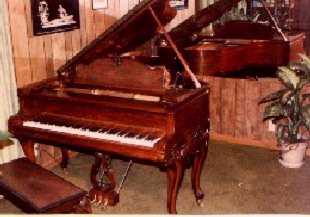 |
 |
|
on a Hamburg Steinway 'O' Duo-Art |
played on a Coinola X |
|
|
|
 |
 |
|
played on a Seeburg G |
played on a Seeburg K |
|
|
|
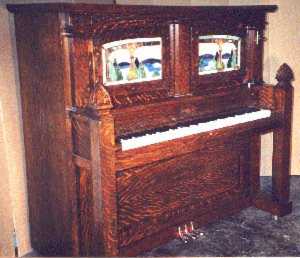 |
 |
|
Required much reveneering. |
For the purist: 5 minutes and 4 screws removes them without a trace. |

|
| Steinway Art Case/w Duo-Art (Click On Image for Full Size Picture) (Rhapsody in Blue - Sample MP3 File - Click Here)  Click Here for more information about the CD. |
 1906 A.B. Chase, Model 12-- built long before players became popular. Was not yet using the trade name Artistano. The roll transport originally played only 65 note rolls. This player had to be converted to play 88 note rolls and the last octaves were coupled, so it actually plays a lot more notes, with smaller holes than originally envisioned. The valves had to be modified slightly to allow for this. Otherwise, totally original in all other aspects. There is no suction box or anything else that could be used to play it artificially. This piano is 57 inches tall, and has a mirror finish. |
|
And Gerety-Chase E-Roll Player System  This is a Farrand artcase player, now retrofitted and completely restored as a Duo-Art Reproducing piano. It was originally a Cecilian 88 note player piano artfully designed by Gustav Stickley of New York. It has a fumed mission oak case, hammered copper strap trim, lamps, and hammered pedals, all designed and added by Stickley. The keyboard is a brand new pure ivory keyset and ebony sharps, created by Mike Morvan. The player stack was built in my shop to be an exact copy of the Aeolian Duo-Art player. Many other changes, such as the keybed and control cover follow the period design and match the original wood, finish, and color. The performance of this reproducer is excellent. It is also equipped with the Gerety-Chase E-Roll Player-- an unobtrusive, invisible electronic interface which also allows the instrument to play electronic scans of original reproducing rolls. This increases its library thousands of times. |
 This Knabe Louis XV Ampico Grand is a beautiful piano in all aspects. Recently restored from a previous "restoration" in which everything was done wrong. For instance, the wrong hammers were used, the hammers were also drilled with a pitch angle and struck the string in the wrong place, the backchecks were badly mispositioned, even the treble bridge was misplaced. The new pinplank was the wrong thickness, and the plate's height above the soundboard totally wrong. In short, the piano arrived having a mediocre tone and lousy action. Then the player had obviously been retrofitted with a different player stack that didn't fit. The player had been rebuilt with several kinds of hardware store glues and you have the "high-priced miserable mess scenario" that is so often found in these players, nowadays. While it required much extra time and effort, the work was well worth it, as this piano has no weak points at all, and I think the tone created by starting from scratch makes this instrument very special. It is, without a doubt, one in a thousand, tone and power-wise. I've never heard better. Besides that, it is rare, but one of the most desireable grands ever manufactured. One dealer listed the present worth of this player, when fully detailed and restored with the original high polish finish in Italian walnut, at about $70,000 over 15 years ago. The value of all pneumatic players which are restored thoroughly, without shortcuts, will last probably 60-70 years in filtered, climate-controlled homes today, and their value is already climbing. But the value of reproducers is today tied directly to performance, appearance, and in whose shop the work was done, which of course we think is a wise method of valuing anything. Craig Brougher |
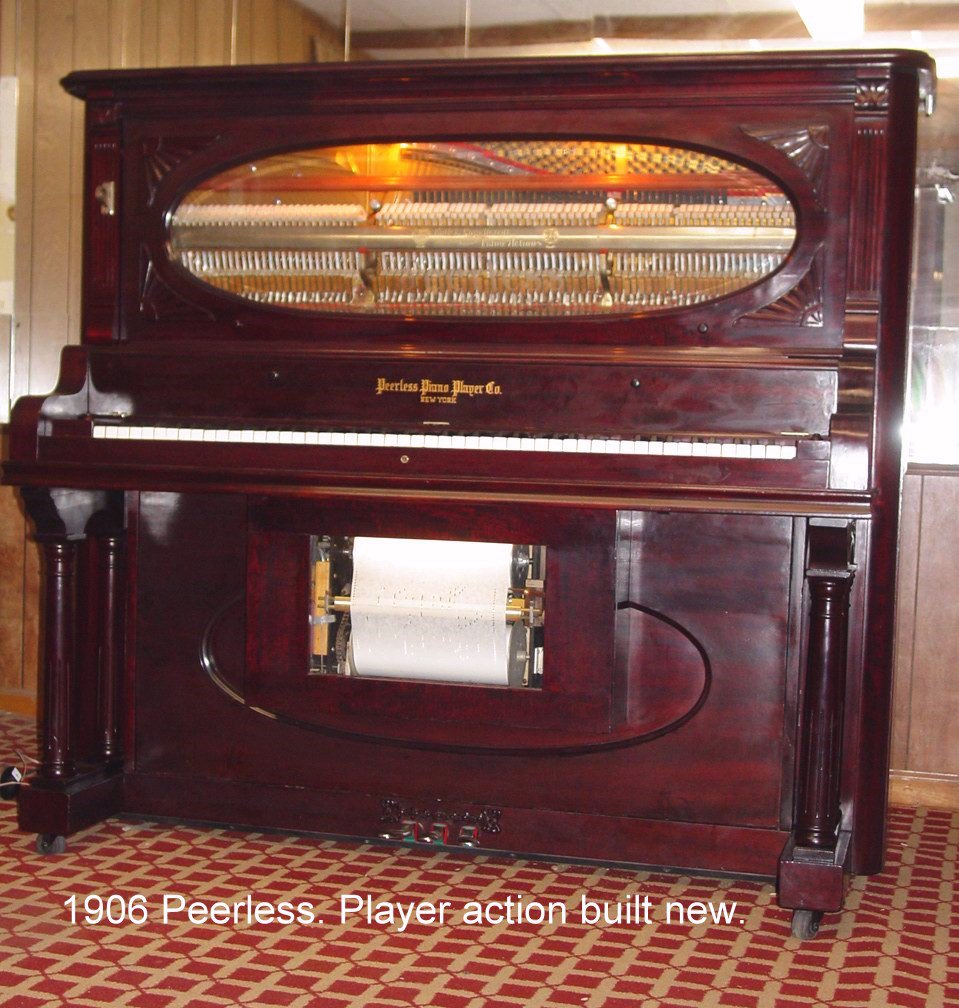 Here?s a pic of an old Peerless that I converted to play A rolls. Notice the spoolframe under the keybed. I modified the kick panel and built a box and an access door on it to clear the spoolframe that I hung from the keybed. It has a light above it, so the roll is well-lit as the player plays it, I think adding to the interest. It?s sure a pretty instrument. This thing came to me in such terrible shape that I didn?t think I could restore it. It had termites, bottle rockets, over a dozen mice bodies, and there wasn?t any veneer on it that was completely glued on. Everything in the action above the stickers is new. There was no motor, the crank shaft was broken, there were dozens of hornets nests and wasp nests in it, and the valves inside the stack were totally ruined. No way to restore anything. It all had to be made over again, from scratch. Craig Brougher |
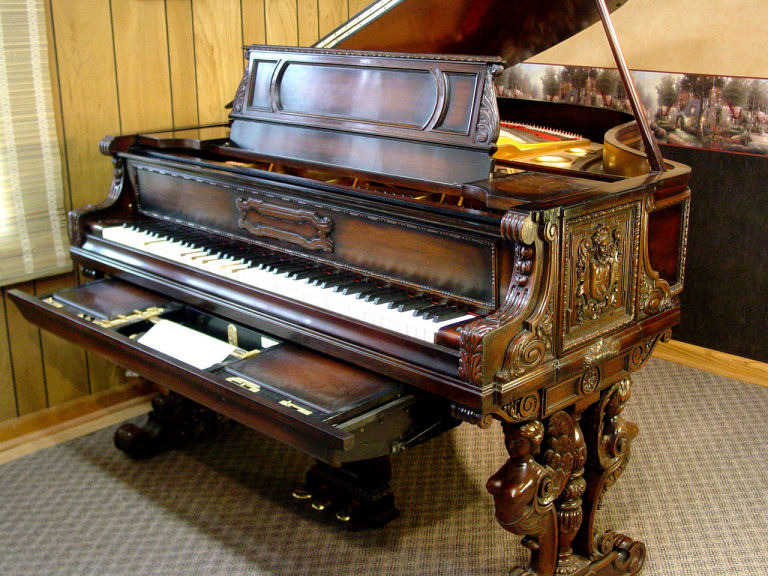  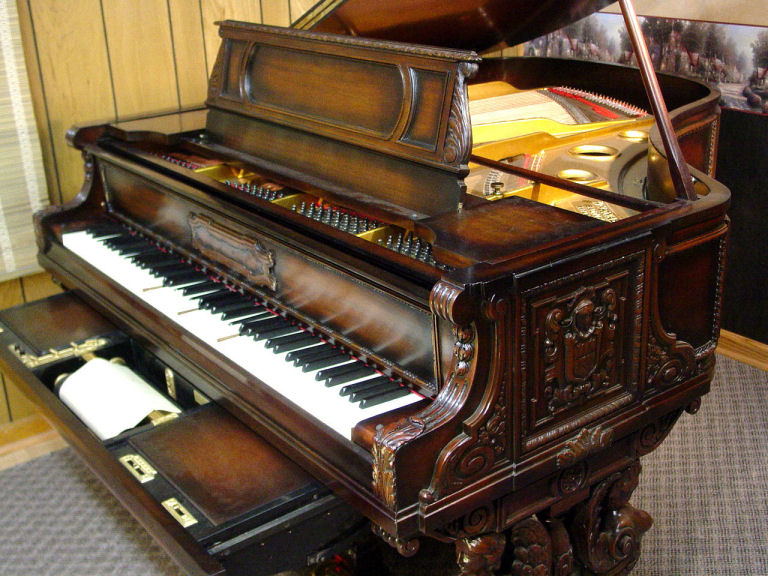 According to one record at least, only 10 of these were ever built. It is not known for sure where the carving was done, but most believe in Italy. This piano was reputedly owned by a New York City banker and purchased for $19,500 in 1925. It's suspected that the banker got a pretty good deal on it, initially. It was the first of the series and Knabe's experimental model, which had a series of mechanical and retrofit problems initially, but all completely taken care of by the restoration. Someone had attempted to refinish the case by faux-graining portions of it in an attempt to lighten the color, but instead did a very amateurish job and left the legs as they were originally, giving it a two-toned appearance when we received it. Today, its new owner is very well pleased, as the piano has a large tone and quite impressive, as well. Craig Brougher |
| Home | Manuals | Supplies | Search | Consult | Contact | Testing | Service |
|
407 19th Ave, Brick, NJ, 08724 Phone Number 732-840-8787 |
